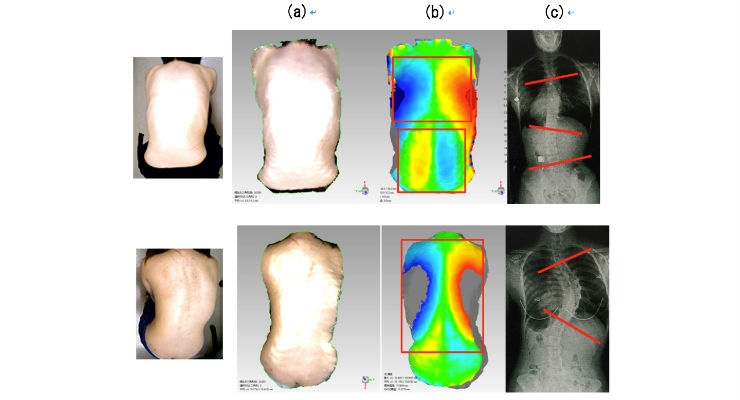A New System to Detect Spinal Deformity

By Hokkaido University | November 21, 2016
Image analyses of idiopathic scoliosis sufferers using a three-dimensional, back-surface-symmetry-recognition system Top: images of a case in which a patient is to be treated with a brace. The thoracic vertebra curves by 34 degrees. Bottom: images of a case in which a patient requires surgery. The thoracic vertebra curves by 60 degrees. (a): a three-dimensional image of the back’s surface (b): based on image (a), the system evaluates the degree to which a patient’s back deviates from the ideal symmetry for a human back within a few seconds. The larger the deviation, the deeper the color. (c): comparison to X-ray photos. Deviations in the image correspond with curvatures. (Credit: Hokkaido University/Noa Co., Ltd.)
Hokkaido University researchers have developed a symmetry-recognition system for the surface of the human back that can three-dimensionally detect the early stages of idiopathic scoliosis, a type of spinal deformity, without the help of a specialist doctor.
Individuals with idiopathic scoliosis, many of whom are pubescent girls, suffer from serious curvature of the spine. The disease has a characteristically high affliction rate, affecting one in 50 people.
Early detection of the progressive ailment is regarded as essential for treatment, as it is effective to wear a special brace when the spine is curved by 30 degrees or more. In recent years, genetic study of the disease has progressed, boosting the development of treatments.
OrthoSpineNews
OrthoSpineNews.com is the preferred aggregator of all news in the orthopedic and spine industry. You can subscribe for our daily email, follow us on twitter or download our app for iPhone and Android.